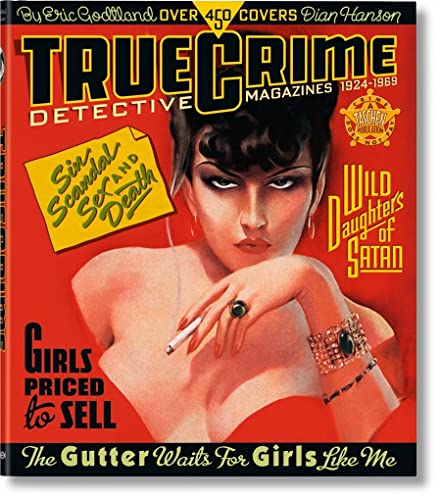True Crime Detective Magazines
1924-1969
Eric Godtland
BOOK REVIEW

Step into the gritty, tantalizing world of crime with True Crime Detective Magazines: 1924-1969 by Eric Godtland, a visual and intellectual feast for those who find themselves irresistibly drawn to the dark underbelly of society. This book does more than merely catalog vintage crime magazines; it throws open the doors to a universe steeped in intrigue, scandal, and raw human emotion. Have you ever wondered what it felt like to look into the face of crime from the comfort of your own home? This striking compilation invites you to witness the evolution of true crime storytelling, challenging our perceptions of morality and justice along the way.
In the early 20th century, America was undergoing seismic cultural shifts. The roar of jazz, the tumult of the Great Depression, and the rise of organized crime painted a vivid backdrop for the true crime genre. Godtland expertly captures this era, exploring how the magazines of the time encapsulated not just sensational tales, but also societal fears and fascinations. These publications were the tabloids of their day, feeding the public's insatiable appetite for drama and danger, and thrilling them with narratives that blurred the lines between victim and villain.
Striking visuals and bold headlines dominated these magazines, drawing readers like moths to a flame. Godtland's work serves as a time capsule, showcasing the raw and often shocking illustrations that accompanied lurid stories, echoing the sensationalism that continues to captivate audiences today. The juxtaposition of art and narrative in these publications is captivating, evoking a visceral reaction that resonates even in our modern age.
The opinions on True Crime Detective Magazines have sparked lively debates among readers and critics alike. Some find themselves engrossed, praising Godtland's meticulous curation and insightful commentary, while others lament a perceived glorification of violence. Comments range from admiration of the artistic aspects of the magazines to critiques of their reflection of societal desensitization. This clash of perspectives showcases the layered complexity of true crime as a genre - a duality that Godtland revels in, forcing us to confront our fascination with the macabre.
Reflecting on the emotional impact of crime stories, one reader expressed, "It's like looking into a twisted mirror, where society's darkest secrets are laid bare." This sentiment captures the essence of the book's power: it makes us grapple with uncomfortable truths. How do we reconcile our appetite for stories that, ultimately, stem from real suffering?
Additionally, Godtland's work compels us to confront the moral implications of our consumption of crime narratives. Are we merely voyeurs, indulging in violence from a distance? Or are we engaging in a necessary dialogue about crime, justice, and societal values? The book acts as a critical lens, prompting readers to reflect on the history of crime reporting and its ongoing influence on our media landscape.
The 1924-1969 period wasn't just about the stories told; it was also about who got to tell them. The era's magazines often reflected a narrow perspective, focusing predominantly on white, sensational stories of crime while marginalizing voices and experiences from other communities. This limitation doesn't go unnoticed, and the awareness of these biases invites a broader conversation about what true crime can and should encompass.
As you leaf through the pages of True Crime Detective Magazines: 1924-1969, you may find yourself unsettled, fascinated, or, perhaps, both. This emotional cocktail is precisely what makes Godtland's work monumental. The dynamic portrayal of crime and societal reaction serves not just as entertainment but prompts a necessary interrogation of the narratives we consume.
In a post-modern world where true crime dominates podcasts, documentaries, and mainstream media, Godtland's exploration shines a light on the roots of this cultural phenomenon. His work captures the essence of fear, curiosity, and our innate drive to understand the unthinkable. Are you ready to confront the darkest chapters of our collective story? This is not just a book; it's an invitation to engage with our past, forcing us to question how these stories have shaped our present and will inevitably influence our future. 🚨
In a time where the line between reality and fiction often blurs, True Crime Detective Magazines: 1924-1969 is more than just nostalgic literature; it's a mirror reflecting the complexities of society's most forbidden tales. Don't miss your chance to dive deep into this harrowing yet enthralling exploration - it might just change how you perceive the world around you.
📖 True Crime Detective Magazines: 1924-1969
✍ by Eric Godtland
🧾 336 pages
2013
#true #crime #detective #magazines #1924 #1969 #eric #godtland #EricGodtland